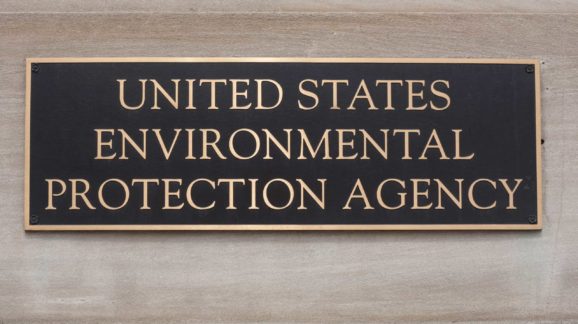Peer Review for Thee but Not for Me

Photo Credit: Getty
In February 2017, the Competitive Enterprise Institute petitioned the Environmental Protection Agency (EPA) to reconsider the 2009 Greenhouse Gas Endangerment Finding. CEI explained in detail several of the factual assumptions made that were no longer true. More than five years later, on the eve of Earth Day, the EPA finally figured out how to respond. This response is hilarious when contrasted with the agency’s claims concerning the peer review of the 2009 Endangerment Finding, which we are also challenging in a separate Information Quality Act proceeding.
In our 2017 petition, we cited a study by James P. Wallace III, John R. Christy, and Joseph S. D’Aleo titled “On the Existence of a ‘Tropical Hot Spot’ and the Validity of EPA’s CO2 Endangerment Finding.” The seven peer reviewers of that study are listed on page 2. This is how the EPA tries to discredit this study:
Here we note that despite the claims … that the Wallace et al. reports were peer reviewed, the petitioners have presented no evidence that any of these reports were ever submitted to a peer-reviewed academic journal or any other formal peer review process subject to standard processes to ensure objectivity, independence, transparency, and/or scientific integrity. For example, there is no evidence that the report was assigned to an independent editor who selected independent reviewers with expertise in the appropriate scientific domains who then provided an evaluation of the report to the editor, after which the report would be revised by the authors until the editor is satisfied that credible concerns from the reviewers have been addressed, after which the editor authorizes publication.
But, here is how the EPA described the peer-review selection process for the 2009 Endangerment Finding and its Technical Support Document (TSD) (Page 6):
Because EPA did not approach the 2009 Endangerment Finding nor the TSD as a scientific assessment, the HISA peer review requirement of allowing the public to nominate potential reviewers was not applicable. …
All the science summarized in the TSD was derived from scientific assessments which met the requirements for a HISA, including solicitation of potential reviewers from the public. Therefore, EPA’s decision to draw from federal experts for the review of the TSD was appropriate and consistent with both the OMB peer review guidelines and with EPA’s IQGs. …
The charge to the reviewers of the TSD was to determine whether the TSD was a fair reflection of the major assessment reports rather than to peer review a new scientific assessment. OIG [Office of Inspector General] report at p. 83. For that reason, the authors of those underlying reports were well-positioned to evaluate the charge question and ensure that EPA did not modify or misstate key findings of the major scientific assessment products.
Neither the 2009 Endangerment Finding nor its TSD was submitted to a peer-reviewed academic journal. And, according to the EPA, in the peer reviewer selection process there was no independent editor who selected independent reviewers—the EPA selected all the “peer reviewers.” In fact, no one outside of the federal government was involved or even considered in the selection of peer reviewers. Instead, the agency selected among only federal government employees (including an EPA employee!), and even worse, selected people who were the “authors of those underlying reports” and told them not to evaluate whether the science was accurate but whether it was a “fair reflection” of their own work.
No “peer review report” was even prepared by the EPA’s peer reviewers, nor was any such report released publicly as it should have been. And it would have been great if the 2009 Endangerment Study had gotten the same treatment that EPA complains was missing from the Wallace, Christy, and D’Aleo study—that is, if it had been “revised by the authors until [an independent] editor is satisfied that credible concerns from the reviewers have been addressed, after which the editor authorizes publication.”
This isn’t the only instance of the EPA treating the studies it favors differently from the studies it disfavors. The Clean Air Scientific Advisory Committee (CASAC), an independent body of experts that Congress required the agency to create, was asked to review EPA analysis of PM2.5 harms. PM2.5 are small particles (less than 2.5 microns), effectively dust and other particulates, that the EPA often uses to justify its action with wild claims of massive deaths. The CASAC chairman identified serious and substantial errors with the EPA’s harm calculations for PM2.5. So the agency fired them all and only let back on the panel those who agreed with it. That is how the EPA “addresses concerns” raised by a peer review panel.
If only the EPA would actually follow what it says is required by peer review, we’d all be better off.